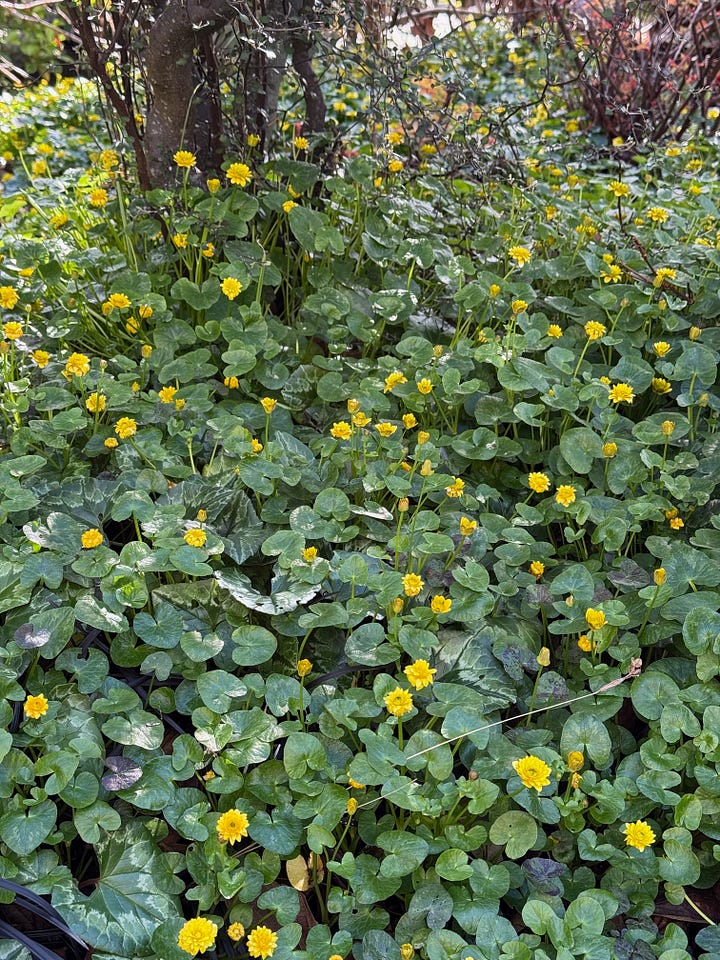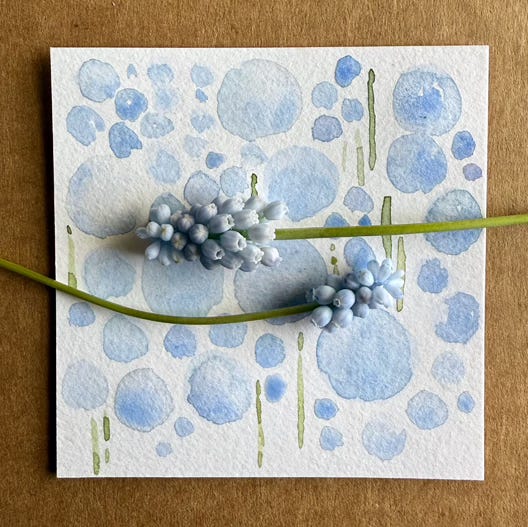Hello,
Thirty-some years ago I returned to growing vegetables. I can date this to two things: I had just read French Dirt, the story of a garden in the South of France, and I was desperately trying to get my kids involved in the hope that they would eat more vegetables. So, already you can see that my ambitions were lofty and more than a little bit naïve. Which explains why, when it came time to set tomatoes out into my little backyard plot, I selected the oldest heirloom varieties with the biggest fruit and the most romantic backstory, think: ‘Mortgage Lifter’, ‘Brandywine’, and others. Proving once again that hope is sown alongside every crop in a garden. A crusty gentleman neighbor approved of my intentions but scoffed at my choice of tomatoes. I remember Bill gruffly admonishing me, “I like to eat my tomatoes.” A lifelong vegetable gardener, he knew better than I that growing conditions in my Pacific Northwest garden would never produce a crop that wanted to be in Iowa, or Wisconsin or anywhere with hot summers. He was right.
For decades, Bill tended a big plot in the neighborhood, a property he owned that had never been built on, with full sun, rich soil, and loads of ‘Early Girl’ tomatoes. I used to see him trundling back to his house across the street, his wheelbarrow filled with ripe red tomatoes. Years later, when Bill passed, the plot was taken over by his (equally crusty) son, Billy who tended the garden in his father’s footsteps right up until his death several years ago. Margi, Billy’s wife took over from there tending established rows of raspberries, a giant fig tree, salad greens and the best carrots I’ve ever tasted. Once, when Margi stood on my back step with a fistful of roots, I confessed to her that I couldn’t grow a carrot to save my life (I still can’t). You don’t have to, she said – here. Margi passed in early 2024 and the garden grew wild. Last summer the littles and I explored the tall grass collecting calendula petals to make floral confetti to throw at my son’s wedding – he who never willingly ate a vegetable unless it was a french fry.
At the end of last year, we found out that (cranky, quirky) Billy and Margi had left the land to the University of Washington who passed the title to GROW, a not-for-profit organization whose mission is “to create vibrant inclusive Northwest communities with healthy food culture, fed by organic gardeners and farmers.” The plot is transitioning to a community food forest that we’ve all signed up to help tend. Most of the harvest will go to regional food pantries, the rest will be shared with volunteers. A week ago I spent several hours pruning a row of espaliered pears back into shape. I’m already dreaming of red, ripe raspberries still warm from the sun. I’m so glad you’re here.
xo Lorene
Recent reading – “Pansies, How to Grow, Reimagine, and Create Beauty with Pansies and Violas” by Brenna Estrada is a love letter to a flower that has been capturing hearts for centuries. Once a favorite flower of nobility and fashionable society in the 19th century, by the mid 20th century falling interest diminished the once-flourishing bloom to “old-fashioned,” or a squat seasonal “color spot” with giant red, blue or yellow blooms. There’s so much more to this enduring flower.
Recent writing Singing the Song of Green in Spring on Garden Rant. My favorite aspect of spring is a spirit of optimism. I don’t know about you, but I could use a massive dose of optimism. So far 2025 has been challenging, a political and emotional rollercoaster. Am I allowed to use that analogy even if I avoid rollercoasters? I know there are those who thrill at clickety cresting and plunging drops, but you’ll always find me on terra firma — trust me it’s in everyone’s best interest. It’s just that the typical highs and lows of everyday life these days feel dangerously existential. I know I need a pep talk — maybe you do as well.
In the Handmade kitchen Citrus salt is one of four projects included in my latest Creativebug class (see below). It’s so good, but vanilla salt might be even better. Like citrus salt, the recipe couldn’t be easier. Split and scrape a vanilla bean then add the resulting paste to ½ cup of flaky salt, using your fingers to massage the mix to evenly distribute the powerfully fragrant seeds. Package your vanilla salt in a glass or ceramic jar and include the spent bean to shore up the flavor and perfume of this delicious concoction. That’s it. Vanilla salt is excellent in sweet preparations but really shines when used to finish off a platter of summer ripe tomatoes slicked with olive oil. Even the modest decidedly non-heirloom varieties from my garden.
Gather & Make on Creativebug
All my life, I have loved making things with my hands. So, it's only natural that as a gardener I adopt a handmade approach, I even named my website a handmade garden. Back in 2022 I filmed a series of classes with Creativebug – Gather & Make recently launched. In this class I’ll show you how to make a moss ball Kokedama, capture citrus season with a zingy finishing salt, thread botanicals into garlands and wreaths, and ink leaves and flowers to create seasonal prints from the garden. Click the button below to view Gather & Make with a 60-day Creativebug account for free. And while you’re browsing everything on the site, I hope you’ll check out my daily practice series and my class on garden journaling.
As a Creativebug instructor I receive a small commission when you use my links to explore the site – feel free to share with others!
Coloring


Brazen indeed!
Every years around this time I think back to the 90s when a plantsman said don’t plant that, it’s invasive. P’sha. She’s gorgeous! That black foliage, those lacquered buttercup petals. Um, yeah. Ranunculus ficaria ‘Brazen Hussy’ will outlive us all.
Recently I read this somewhere—it seems appropriate for a Fool’s Day in April:
“Self employment, for me at least, is a never ending contest between the world’s worst manager and the world’s laziest employee.”
Why yes! I absolutely buy vegetables—like this gorgeous salmon oyster mushroom—simply to paint its colors. Now to prepare them and ingest those colors. My friend Ashley at
would have loved the enthusiastic mushroom appreciation society at the checkout at Chimacum Corner Farmstand.

Some call this a snakes head fritillary (Fritillaria meleagris) — I prefer nodding fritillary in a dapper tweed suit. (I just made that up)
The over-wintered cerinthe seedling are lending mermaid hues to the back garden.
Every time I snip a sprig of honeywort (Cerinthe major purpurescens) to bring indoors it immediately wilts and looks so sad. But then I slit the stem and place it in a vase with water up to the blooms and it perks right back up. Now, several days later it’s still looking good. Hydration is the answer to everything.
Oh Valerie, you are true blue. Muscari armeniacum ‘Valerie Finnis’












Your newsletter is so soothing to my soul. I'm so glad I came accross it. Now, I will check out your garden journaling class. Have a lovely day x
I LOVE French Dirt. One of my favorite gardening books I've ever read. And the story about Bill, Billy, and Margi's garden warms my heart so much.